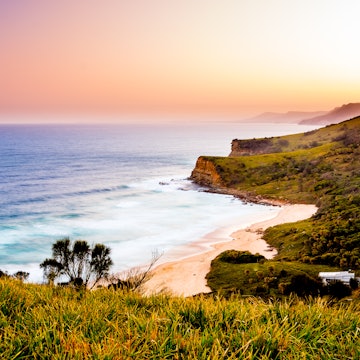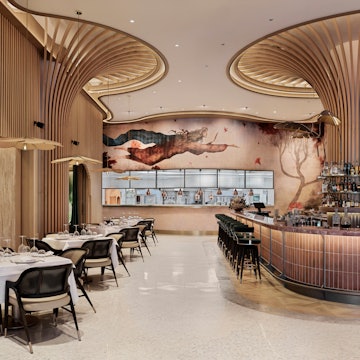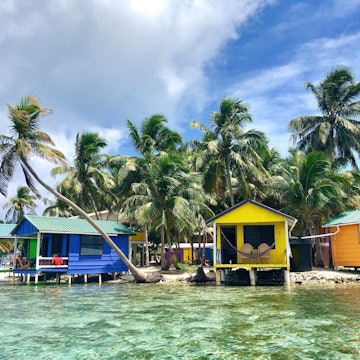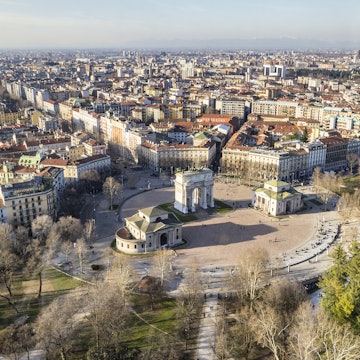

Autumn in the Rioja region of Spain. Jesus Ignacio Bravo Soler/Shutterstock
For lovers of bold, oaky red wines and crisp whites that remind you of that perfect seaside day, Spain is a dream. There are more than 100 officially recognized wine regions in the country that vary in notoriety from the small but fruitful province of La Rioja to the smaller, more niche regions producing heroic wines at high altitudes like Priorat in Catalonia or along the cliffs of Arribes del Duero in one of the most remote parts of Castilla y León.
The best time to visit Spain if you would like to take a tour through the vineyards and stop in at a winery for a tasting is between August and October, when the grapes are ripe, and the harvest festivities are on. Before you enter the tasting room, you may be given a tour of the grounds or the historic cellars as well as a history lesson in each area’s unique winemaking heritage and terroir. Depending on the winery or bodega, you will be given between three and six different styles of wine to try with a small tapa to complement it, such as olives, local cheese or even potato chips.
Here’s everything you need to know about Spain’s wine regions when planning a bodega-filled holiday.
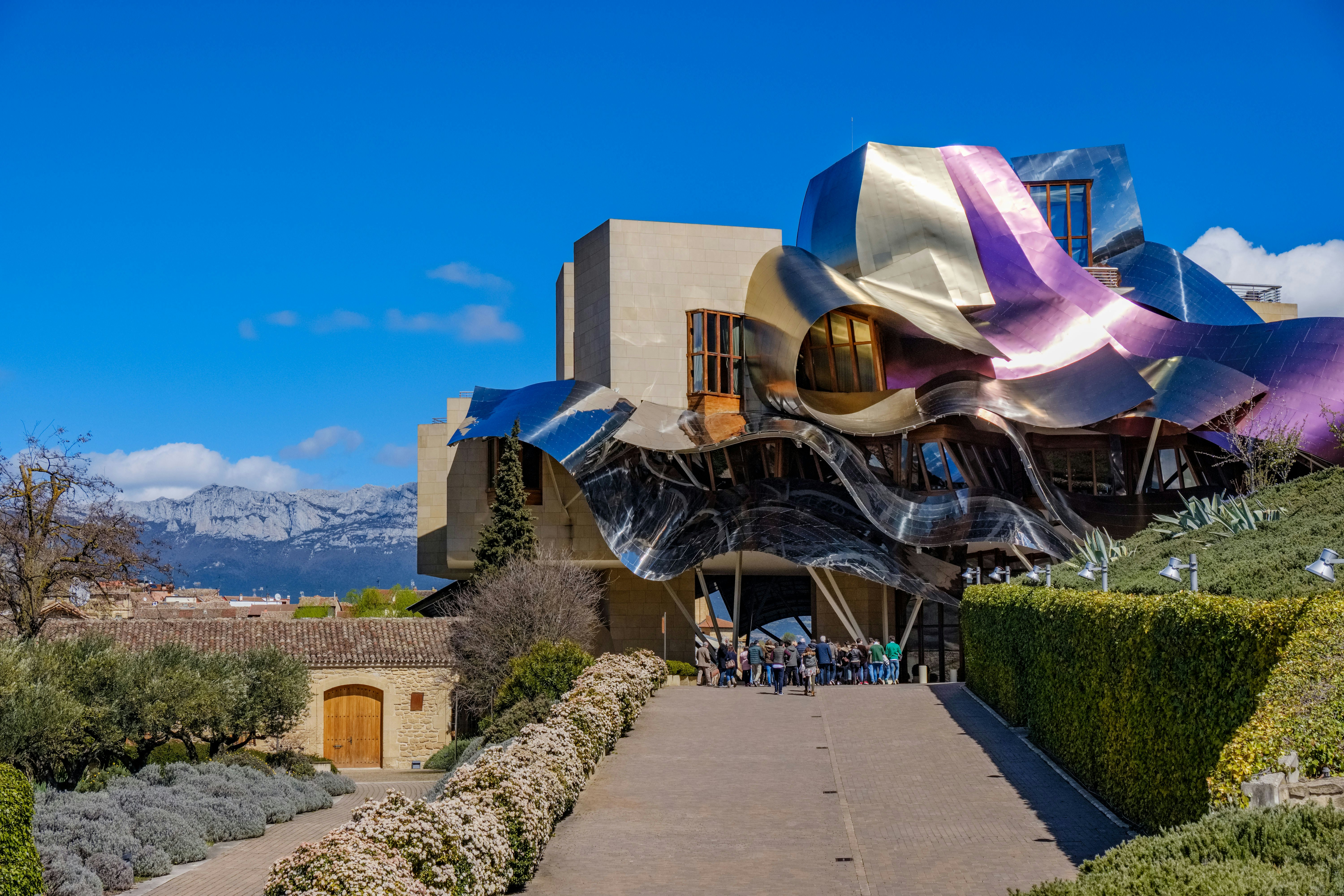
Spain’s main wine regions
Rioja
One of the smallest regions in Spain is also its biggest wine producer. With a fitful name that calls to mind a deep-bodied red, La Rioja is home to major wineries that emerge from the landscape with avant-garde architecture like Frank Gehry’s hypnotic design of Marqués de Riscal or the undulating roof of Bodega Ysios. However, you can visit smaller wineries in the bodegas and surrounding vineyards of Logroño, the capital of the region and a major stopping point on the Camino de Santiago, or pay a June pilgrimage to Haro for the annual wine fight, where you’ll be drenched (and drench others) in the local vintage.
Where to stay: The hotel at Marqués de Riscal is worth the spend and will give you a chance to appreciate Frank Gehry’s signature curving titanium masterpiece up close, and after a long day of vineyard touring, you can try out the vinotherapy treatments at the spa.
Ribera del Duero
On the Duero River in Castile y León, this wine region is best known for its tempranillo, a red wine with a flavor that runs the gamut from fruity to earthy. The official wine route of the wine region follows the river from Peñafiel to San Esteban de Gomez, where you will find hundreds of wineries and bodegas like the historic and prestigious Vega Sicilia, which gets the credit for putting this wine region on the map. There are dozens of luxury hotels and wine-themed spas, like Castilla Termal, where you can get the luxury treatment, but there are also more down-to-earth accommodations like the Hotel Convento Las Claras in Peñafiel, where you can also visit the wine museum in the Castillo de Peñafiel, a 10th-century castle.
Day trip: This wine region is only about two hours north of Madrid, so you will find a few tour operators like Gourmet Madrid running excursions directly from the Spanish capital to wineries near cities like Valladolid, Burgos and Segovia.

Penedés
Hop on a train going south from Barcelona, and you can be in the Valle de Penedès in less than an hour. You will find many wineries here producing different styles, but cava is the star of the show. Most of Spain’s iconic sparkling wine is produced in this valley, with some of the leading wineries being Llopart and Pere Ventura Cava. You will also find many bodegas in the two main towns of the region: Sant Sadurní d’Anoia and Vilafranca del Penedès. Many of the wineries here have winemaking routes that date back to ancient times, but one of the most popular attractions is a remnant of the famous Catalan modernism movement. At Cordoníu, you can admire a beautiful warehouse designed by Josep Puig i Caldafalch, a contemporary of the Sagrada Familia designer Antoni Gaudí.
Cycle tour: One of the best ways to explore Penedès on your own is with a guided or self-guided bike tour along the Ruta del Vi, a bike path that traverses scenic countryside (with Montserrat views) as you make your way in and out of tasting rooms of all sizes.
La Mancha
With more acres of vineyards than any other wine region in the world, La Mancha is a destination that cannot be ignored in a conversation about Spanish wine. The land of Don Quixote and Manchego cheese (one of the best to pair with any Spanish wine) is also known for bulk-producing wineries that export around the world, but you can also find family-run operations and co-ops focused on natural wine. Valdepeñas is the town to visit with hundreds of historic wine caves and are now used for atmospheric tasting sessions at bodegas like La Antigua Bodega Los Llanos. A trip to La Mancha would not be complete without a visit to the famous windmills that inspired Cervantes, particularly the giant Molino de Gregorio Prieto.
Where to stay: The Hospedería Museo Valdepeñas is a budget-friendly hotel located inside a renovated winery with homey rooms and a lot of history.

Rias Baixas
Grown in Spain’s northwestern corner, Galician wine is all about albariño, a wine grape that thrives in humid, salty air and produces crisp white wines. On a hot day, with a big dish of seafood in front of you, it’s the ultimate pairing. However, unlike the rest of Spain, Galicia is known for its cloudy skies and the dense forests and dramatic cliffs that define the landscape. Use the town of Cambados, northeast of Pontevedra, as your base for exploring the Ruta do Viño do Rías Baixas. The seaside town is the unofficial capital of Albariño wine country, with fantastic medieval architectural sites worth exploring, like the Pazo de Fajardo, a 17th-century palace which is now used as the base of operations for the small family-run winery Gil Armada, one of the dozens open to tours in the area.
When to go: Plan a trip to Cambados in late July or early August to celebrate the Festa do Albariño, a time when the whole city comes alive with live music and plenty of opportunities to taste wines from across the region.
Sangria, vermouth and tinto de verano
Everyone knows Spain for its sangria, and even though you can find it in just about any tourist hotspot, you rarely will find any Spaniard drinking this fruit-spiked wine, which is meant to be shared, outside at a summertime barbecue or fiesta. If you’re looking for something more authentic, try a tinto de verano. Made with a squirt of lime juice and sparkling water, it’s similar to sangria but much less sugary and typically enjoyed in summer. For an anytime drink, vermouth is another local staple. This fortified wine is usually accompanied by an olive and orange slice – splash of sparkling water is optional – and there are hundreds of brands and bodegas that each use their own unique blend of spices, so no two vermouths are exactly the same.








